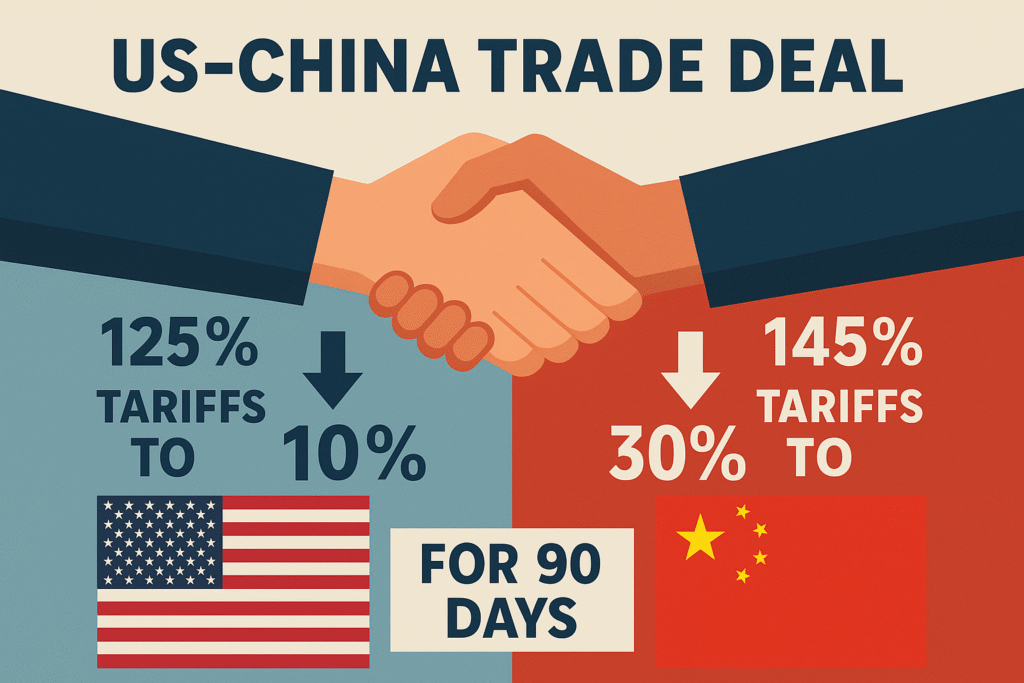US-China Trade Deal: In a significant development during the ongoing trade discussions, China and the United States have agreed to temporarily lower tariffs on each other’s goods. China has proposed slashing its tariffs on US goods from an eye-watering 125% to just 10% for the next 90 days. This move comes as both nations continue to negotiate in an attempt to ease the trade tensions that have dominated global markets.

Simultaneously, the United States has suggested reducing its tariffs on Chinese products from 145% to 30%. This reduction is part of a broader effort to de-escalate the trade conflict, which has caused disruptions and uncertainties in international trade.
The decision was officially announced in a joint statement from both governments, released in Geneva, where the trade talks are being held. The statement highlights a temporary but significant step toward resolving the ongoing trade dispute between the world’s two largest economies.
Background of the Tariff Dispute
The trade tensions between the US and China have been escalating for several years, particularly after the announcement by former US President Donald Trump to impose reciprocal tariffs on Chinese imports. On April 2, 2023, Trump implemented a series of tariffs aimed at addressing what he considered unfair trade practices by China, which sparked retaliatory actions from Beijing. These tariffs have significantly impacted various industries, from technology to agriculture, straining the economies of both nations.
In response, both sides have been working through diplomatic channels to find common ground. The new tariff reductions come as a part of these ongoing discussions, with the hope that this temporary measure will lead to more permanent agreements in the future.
Impact on Global Trade and Market Sentiment
The temporary tariff reduction could be a sign of relief for global markets, which have been jittery due to the trade dispute. Analysts suggest that the move may help stabilize the economic outlook for both countries and encourage other nations to pursue similar trade dialogues to avoid potential trade wars.
While the tariff reductions are temporary, their significance cannot be overstated. If the talks between the US and China continue to progress positively, it could pave the way for a comprehensive trade deal that addresses key issues, such as intellectual property rights, market access, and technology transfer.
What’s Next for US-China Relations?
As the trade talks continue, both Washington and Beijing are expected to take a cautious yet optimistic approach. The 90-day window provides a temporary reprieve, but the long-term success of the negotiations will depend on the ability of both nations to make concessions and find mutually beneficial solutions.
The coming months will be crucial in determining whether this temporary tariff relief leads to lasting peace or if further tensions will resurface. For now, the reduction of tariffs represents a positive step forward, signaling a potential shift toward cooperation rather than conflict.
The ongoing trade talks between the US and China are seeing a positive turn with both nations agreeing to lower tariffs temporarily. This move is expected to reduce the strain on both economies and provide a moment of relief for global trade. With further discussions on the horizon, the next 90 days will be pivotal in shaping the future of US-China trade relations. Both countries seem to be moving toward a more cooperative stance, potentially paving the way for a lasting resolution to their trade disagreements.
4o mini
